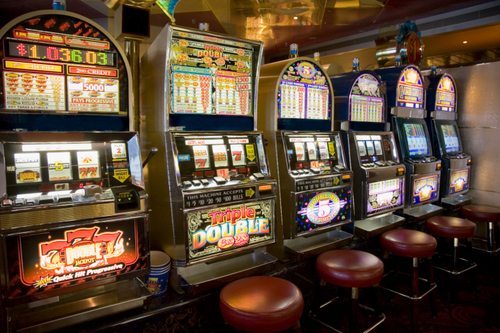When it comes to roulette, most players will tell you that you simply can not win. As you know, the odds are stacked in favour of the house, but this does not mean that you can not win. For many years, players rely on various strategies to attempt to beat the house at roulette. Some players have devised ingenious gizmos that manipulate the roulette ball, others have relied on more legal ways to win. Yet, most have failed to beat the house.
Nevertheless, according to scientists, beating the house and winning at roulette is possible. All you need is some maths.
Without a doubt, if a player walks into a casino with a complex odds calculating machine in hand, the casino personnel will discreetly ask them to leave. So, scientists designed a simple method that calculates where the ball will land after each spin.
Inspired by the velocity of the ball, researchers have come up with an equation which supposedly erases house edge in almost 60 per cent of all times. What is more, bets based on the outcome of the equation have an 18 per cent return on investment. On the other hand, bets placed without the assistance of this equation have a -2.7 per cent (at best) return on investment.
You might already know from roulettevision.com that there are several types or roulette games – American and European roulette. As the games are different in terms of roulette wheel design, you can not use one and the same mathematical strategy to improve your winning chances on both types of roulette game. In the lines below, we will focus on the mathematics of both types of roulette. But first, let us focus on the design of the roulette wheel.
How is the wheel designed
Not unlike a dartboard, the roulette wheel has a complex, carefully planned design. What is more, as we mentioned above, roulette wheels are different in European and in American roulette.
First of all, the American roulette wheel features not one, but two zero pockets. Big deal, you might say. Well, it is. The two zero pockets correspond to a house edge of 5.20 per cent, which means that playing American roulette will result in more losses. In comparison, European roulette has a house edge of 2.7 per cent. As you can see, if you do not rely on a particular strategy, you are better off playing European roulette.
Secondly, on different types of roulette games, numbers are arranged differently. Nevertheless, these differences are not that big. Roulette wheels’ number alignment is based on similar patterns, according to which low numbers (1 to 18) must be altered with high numbers (19 to 36) as much as possible. European roulette wheel violates this rule only once, whereas American roulette violates it more often, making it a more disproportionate game.
Roulette game maths
Let us first examine the maths of American roulette. As we already said, the wheel of American roulette has two green zero pockets and 36 number pockets – 18 black and 18 red. If you want to calculate the probability of the ball’s landing on a red pocket, you must divide the number of red pockets to all pockets on the roulette wheel. So, in American roulette, the ball has a 47 per cent to end up on a red section.
European roulette does not have two zero pockets, which adds an additional 1 per cent of the ball landing on a red or black section. Naturally, since there is almost 50 per cent chance to make a right guess, the betting options on the outside of the roulette table pay out 1:1.
In both types of roulette games, single number bets are bets with highest pay outs. Correctly guessing a single number pays out 35:1. So, if you want to score a big win, you have to place bets on single numbers.
Can you really win?
The right mathematical strategy can make you a big winner. Contrary to common belief, however, finding the right strategy is not as easy as a child’s game. One legitimate maths strategy that is used to beat the house deals with the number of times the ball will bounce. Of course, the ball may travel different distances with each spin. Nevertheless, you should be able to calculate the average travel distance of the ball, and place your bet accordingly. Another strategy employs all winning numbers from the last 10 spins. Combine them and start dividing the number by three until you have a number you can place a bet on.
To sum up, not all maths strategies can help you win an edge over the house. True, there are some games which can help you win big. However, even the most reliable mathematical tricks require time and knowledge, and might not help you surpass the house edge.






